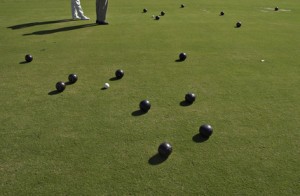In the early part of the season no growth means no recovery from last winter’s damage, bare areas not filling in with new grass, bumps, hollows and all sorts of other problems mostly related to surface smoothness and consistency.
I’ve heard more than my fair share of strange reasons in bowling green maintenance circles when there is a lack of growth. These mostly centre on almost every bowling green maintenance practice except the one that matters…why?
Well the one that matters is “Irrigation” and it’s still a big taboo in a lot of clubs and in bowling green maintenance circles; it’s “the elephant in the room” to use one of the most annoying buzz phrases in recent times! However the elephant in the room description is a good one in this case; it’s this big, obvious thing in the room or in the conversation, but nobody mentions it!
One club I met with told me they have an “anti-watering brigade” in their club! Can you believe that, a group of members who are actively against watering the green regardless of how much it needs it?
On a well known bowling forum which shall remain nameless here, a contributor added his tuppence to the discussion on irrigation by “boasting” that they never water their green, as if it was some impressive badge to be worn. Another says that watering 3 times a day is crazy (as suggested by another contributor), even though he has no information to tell him the quantity of water being applied or thinking behind the plan.
We really must get over this folks or there will be a lot of very poor bowling green surfaces next year.


